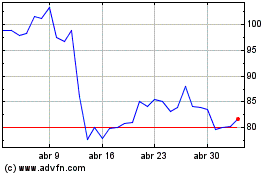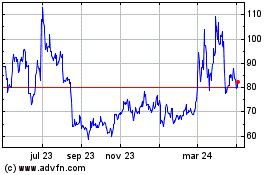Why Is Bitcoin Stagnant Despite ETF Inflows? Report Answers
12 Junio 2024 - 7:00PM
NEWSBTC
Glassnode has discussed in a new report the reasons behind Bitcoin
moving sideways despite inflows into the spot exchange-traded funds
(ETFs). Why Bitcoin Has Been Stagnant Despite Spot ETF Inflows In
its latest weekly report, the analytics firm Glassnode has talked
about how the impressive inflows into the US spot ETFs have failed
to make the price break its sideways trend. The spot ETFs, which
the US Securities and Exchange Commission (SEC) approved in January
of this year, have provided investors with an alternate means of
gaining exposure to the cryptocurrency. Related Reading: Is Bitcoin
Overheated Right Now? This Metric Suggests No These funds buy and
hold Bitcoin on behalf of their users, letting them get indirect
exposure to the coin’s price movements without having to own the
asset itself. The more traditional investors, who don’t want to
attempt to navigate cryptocurrency exchanges and wallets, have
found the spot ETFs to be a comfortable investment option. Since
their launch, the spot ETFs have brought large demand for the
asset. Initially, these fresh capital inflows helped BTC rise to a
new all-time high (ATH), but recently, the asset has been
consolidated. Below is a chart that shows how the combined reserve
of these funds compares against the other large entities in the
sector. From the graph, it’s visible that the spot ETFs hold
862,000 BTC. This is more than what the miners (excluding Patoshi)
hold (706,000 BTC) but notably less than the reserve of the
centralized exchanges (2.3 million BTC). Glassnode has noted that
the cryptocurrency exchange Coinbase alone holds a big part of the
total exchange reserve and the US spot ETF balance through its
custody service. “With Coinbase serving both ETF clients and
conventional on-chain asset holders, the gravity of the exchange in
the market pricing process has become significant,” reads the
report. The data for the whale deposits to the platform reveal a
rising trend until mid-April. According to the analytics firm, a
significant portion of these whale deposits had come from the
Grayscale Bitcoin Trust (GBTC), adding to the selling pressure in
the market. The whale exchange inflows shooting up may partly
explain why the spot ETFs haven’t proven as effective. Another
factor behind the consolidation can be the trend in the futures
market. The chart below shows that the CME’s future open interest
has recently been at high levels. The report thinks this could
signal that an increasing number of traders have been adopting a
cash-and-carry arbitrage strategy. This arbitrage involves a
market-neutral position, coupling the purchase of a long spot
position, and the sale (short) of a position in a futures contract
of the same underlying asset which is trading at a premium. Related
Reading: Litecoin In Uphill Battle: Strong Resistance Might Block
Recovery This could explain why the spot ETF inflows have only been
able to have a neutral impact on the prices in the Bitcoin market
recently. BTC Price Bitcoin has swiftly recovered more than 4% in
the past 24 hours as its price is now back above $69,700. Featured
image from Dall-E, Glassnode.com, chart from TradingView.com
Litecoin (COIN:LTCUSD)
Gráfica de Acción Histórica
De May 2024 a Jun 2024

Litecoin (COIN:LTCUSD)
Gráfica de Acción Histórica
De Jun 2023 a Jun 2024
